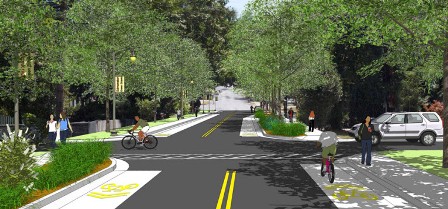
Overview
The goal of green infrastructure and low impact development practices is to develop land and manage stormwater in a manner that imitates the natural hydrology. In a mature forest setting, nearly all the precipitation disperses along the forest floor, where it infiltrates into the ground. It is soaked up by the roots of plants and trees, or evaporates. Researchers estimate that about one percent becomes surface runoff. When forests and natural open spaces are cleared, and buildings, roads, parking areas and lawns dominate the landscape, rainfall becomes stormwater runoff, carrying pollutants to nearby waters. Much less water infiltrates than is soaked up by plants, less evaporates back to the atmsophere, and more becomes surface runoff.